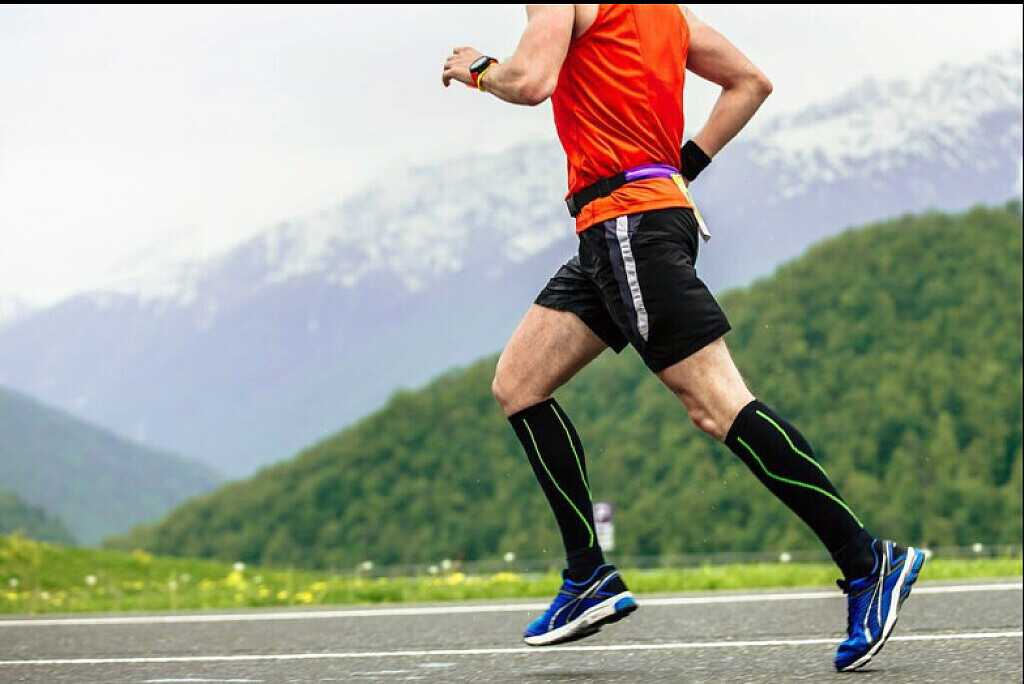Running News Daily
Running News Daily is edited by Bob Anderson. Send your news items to bob@mybestruns.com Advertising opportunities available. Train the Kenyan Way at KATA Kenya and Portugal owned and operated by Bob Anderson. Be sure to catch our movie A Long Run the movie KATA Running Camps and KATA Potato Farms - 31 now open in Kenya! https://kata.ke/
Index to Daily Posts · Sign Up For Updates · Run The World Feed
Compression socks might help your race-day tummy troubles
Compression socks have sprinted from the clinic to the track, with pro runners like Sifan Hassan and Eliud Kipchoge touting their recovery and performance benefits. Are they really more than just a fashion trend? Here’s the scoop on what compression socks deliver, and where the hype might be outpacing the science.
Better blood flow and swelling control


Studies suggest that compression socks really do promote blood circulation and reduce swelling in the legs. Whether you’re logging miles on the trail or pounding the pavement, compression can help prevent that dreaded heavy-leg feeling by keeping blood moving efficiently back to the heart, as recently reported in SELF magazine. Dr. Leada Malek, a San Fransisco-based sports physical therapist, notes that compression socks are particularly useful for runners dealing with recurring swelling or minor injuries like ankle sprains. By reducing fluid buildup, the socks help maintain freedom of movement, letting you run without the drag of swollen, tired legs.
Compression socks can also be helpful for runners who experience postural dizziness after intense effort. For runners with conditions like postural orthostatic tachycardia syndrome (POTS), which can cause lightheadedness when shifting from sitting to standing, the socks help push blood back to the brain and heart.
A calmer stomach on race day
If you’ve ever experienced a queasy stomach during a race, compression socks might help. Running can decrease blood flow to your gut, which leads to discomfort or even nausea. A study in the Journal of Strength and Conditioning Research suggests that compression socks can direct more blood from your legs to your GI tract, helping reduce digestive distress. By maintaining better blood circulation, you may find yourself more comfortable mid-race, with fewer interruptions from an unhappy stomach.
A boost for post-workout recovery
The role of compression socks in post-workout recovery is widely debated. Some research suggests that wearing compression garments can reduce markers for muscle damage. While the effects vary, many athletes report feeling less sore after wearing them. Even if muscle repair benefits are unclear, the stable, “hugging” sensation of compression might help you feel ready to move your body sooner.
Compression socks for travel and long races
Planning to run a far-off race? Compression socks might help keep you healthy by reducing your risk of deep vein thrombosis (DVT) on long flights. According to research, wearing compression socks during prolonged sitting can prevent blood clots by keeping blood flowing in the legs.
Research also suggests that wearing them during a race might reduce DVT risk for the flight home, as the pressure supports blood flow and circulation.
The takeaway
Compression socks may not shave seconds off your race time, but they do offer a variety of benefits, from easing leg swelling to calming a queasy stomach. And if they make you feel more confident on race day, that extra motivation could be all you need to push harder.
by Running Magazine
Login to leave a comment




